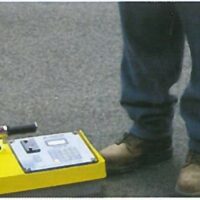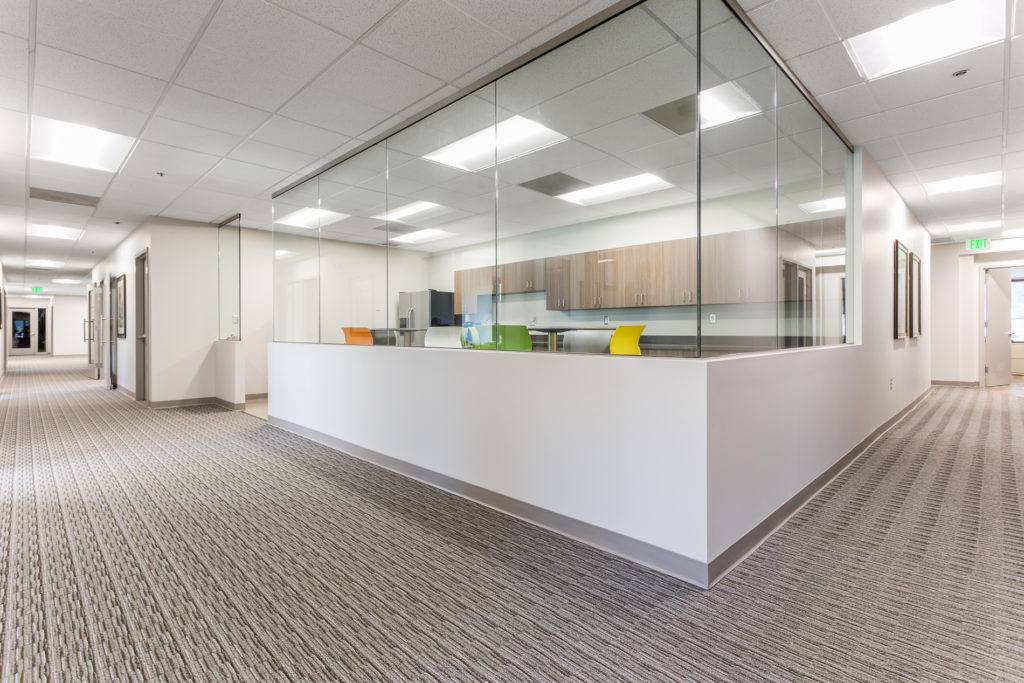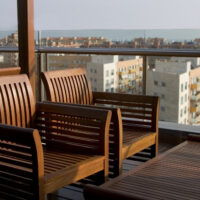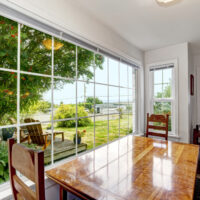Blog
View All Blog Postings
Metal Railings and Window Coatings
Have you considered coating performance options?
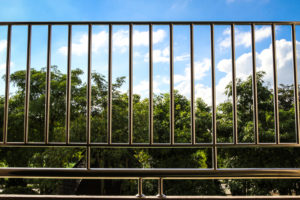 If you have decided to replace your deteriorated railings and/or windows with new, low-maintenance aluminum products, you may think selecting the coating color is the most difficult decision remaining. However, have you considered the coating performance of your new railings and windows?
If you have decided to replace your deteriorated railings and/or windows with new, low-maintenance aluminum products, you may think selecting the coating color is the most difficult decision remaining. However, have you considered the coating performance of your new railings and windows?
Typically, coatings for these items fall under three (3) levels of performance as defined by the American Architectural Manufacturer’s Association (AAMA): Good Coating Performance (AAMA 2603), High Coating Performance (AAMA 2604) and Superior Coating Performance (AAMA 2605). Coating performance can be based on several factors, including coating thickness, color retention, gloss retention, coating erosion, chalk rating, humidity resistance and salt-spray corrosion resistance.
Specifying the coating performance largely depends on location, cost and exposure to the environment. Although having the superior-rated coating will provide the best long-term performance, it will be substantially more expensive, especially with a large railing and/or window replacement project. Unless the coatings are subjected to harsh environments (such as sunny coastal regions), the lower-grade coatings may meet your project needs.
To determine what coating performance option may be best suited for your project, members of our Architectural and Engineering staff are available to assist you. Developing architectural renderings with color and coating options are invaluable before undertaking such an important project.
Enhancing Lives
 Since 2015, ETC and its employees have teamed up to support those with disabilities through canine assistance. With planning and participation from our dedicated staff, we have been able to raise thousands of dollars for non-profit working dog organizations, such as Canine Companions for Independence.
Since 2015, ETC and its employees have teamed up to support those with disabilities through canine assistance. With planning and participation from our dedicated staff, we have been able to raise thousands of dollars for non-profit working dog organizations, such as Canine Companions for Independence.
ETC has recently expanded its canine out-reach efforts with our very own company dog, Blue (our corporate color). Blue is a certified therapy dog who will be visiting local hospitals, senior centers, schools and library reading programs.
Together we hope to enhance the communities in which we live and do business.
The Florida Bridge Collapse
 It is too early to tell what might have failed and caused this bridge to collapse and it will probably be many months before the investigation is complete. The bridge was designed to consist of post-tensioned concrete segments supported by steel cables. It was to have been built in two sections and only the first section was in place when the collapse occurred. The first section of the bridge had only been in place for five days before it fell, so it is not likely a case of being grossly under-designed or inadequate concrete strength. One report indicated that the post-tension tendons had loosened and were being retightened when it fell.
It is too early to tell what might have failed and caused this bridge to collapse and it will probably be many months before the investigation is complete. The bridge was designed to consist of post-tensioned concrete segments supported by steel cables. It was to have been built in two sections and only the first section was in place when the collapse occurred. The first section of the bridge had only been in place for five days before it fell, so it is not likely a case of being grossly under-designed or inadequate concrete strength. One report indicated that the post-tension tendons had loosened and were being retightened when it fell.
Institutional and government projects like this have many levels of design review and material testing involved to help ensure public safety and that the 100-year design life is achieved. This bridge was far from complete as there was a central support pier (pylon) for the steel cables that still needed to be installed. This pier and the cables would have provided additional support to the failed section of the bridge. Partially constructed structures can be very dangerous.
This catastrophic failure reminds us of the inherent hazards of all construction work, not just those involved with demolishing and rehabilitating portions of existing structures. Our prayers go out to all those involved in this tragedy.
Getting To The Core Of The Problem
 When evaluating asphalt pavement, including asphalt-paved parking decks, ETC recommends core sampling as part of our investigative service. Extracting a core sample of the pavement can be beneficial in telling the history of the pavement construction as well as the conditions of the sub-base profile beneath the asphalt.
When evaluating asphalt pavement, including asphalt-paved parking decks, ETC recommends core sampling as part of our investigative service. Extracting a core sample of the pavement can be beneficial in telling the history of the pavement construction as well as the conditions of the sub-base profile beneath the asphalt.
The cores can also tell the story of past pavement work, including structural repairs, pavement membrane (fabric) installation, and multiple repaved layers of asphalt, which can help minimize change orders during the work. This information assists us in developing specifications necessary to address the pavement rehabilitation needs.
Typically, pavement deterioration can be traced back to the sub-base design (the materials below the pavement) and their manner of installation and compaction. What we commonly look for is a stone aggregate material in thicknesses that exceed the pavement profile. In many instances, our sampling will also reveal the condition of the sub-base (or soils) below the pavement as well. Soils with high clay content can affect our recommendations for the type of rehabilitation work.
If these conditions are not defined before scope preparation and implementation, the pavement rehabilitation work may not adequately address the needed issues. This can lead to a reduced pavement life and more costly, long term repairs.
Don’t hesitate to contact us for all your pavement questions and concerns. We can have a member of our pavement consulting and inspection staff visit your property to provide a pavement evaluation proposal, free of charge.
Come See Us on March 10th!
 The ETC team will be attending the Washington Metro Chapter of CAI Conference & Expo on Saturday March 10th. We would be so pleased if you stopped by to say hello.
The ETC team will be attending the Washington Metro Chapter of CAI Conference & Expo on Saturday March 10th. We would be so pleased if you stopped by to say hello.
Our team of experts will be there to answer any questions you may have about upcoming projects and/or building concerns. It’s a great time to gather some FREE advice! Show details can be found on our website.
All property managers, owners and board members that visits our booth will have the chance to win a Yeti cooler! Hope YOU are the winner!!
How can I repair footprints in my concrete sidewalk?
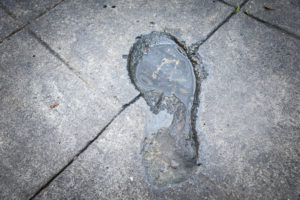 Unfortunately, there isn’t a quick fix for addressing footprints in your sidewalk. Your best bet is to remove and repour the affected panel (section between control joints). There are other options out there including filling the footprint in with a repair material (e.g. sand filled epoxy), patching the area, or grinding down the area, but these repairs will be noticeable and/or may require follow-up repairs down the road.
Unfortunately, there isn’t a quick fix for addressing footprints in your sidewalk. Your best bet is to remove and repour the affected panel (section between control joints). There are other options out there including filling the footprint in with a repair material (e.g. sand filled epoxy), patching the area, or grinding down the area, but these repairs will be noticeable and/or may require follow-up repairs down the road.
Window Condensation
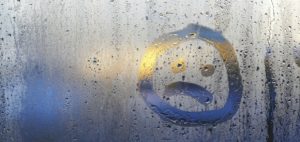
Normal human activities (such as respiration, bathing, laundering, cleaning, cooking, pets, houseplants, aquariums, etc.) produce water vapor that must be accounted for in the design of the mechanical (heating, ventilation, and air conditioning or HVAC) systems for the building. In today’s air-tight buildings, window condensation can result from insufficient fresh air. Unless fresh air is introduced into conditioned space, humidity can accumulate until, in cold weather, the temperature of the interior window surfaces becomes so low that the air at the surfaces become saturated, causing water, or even ice, to form.
Why does fresh air help to reduce humidity? In a cold weather scenario, the outside air is dry and by introducing sufficient fresh air (increased ventilation) into the building, the humidity is diluted and reduced. However, too much fresh air may not always be a good thing during the heating season. In addition to high energy cost, too much fresh air may also render the space too dry for a comfortable environment.
Sometimes the issue may not be as simple as it looks. Improperly designed or installed HVAC systems can fail to remove the moisture and cause elevated indoor humidity. Undersized systems could produce inadequate air movement to remove water vapor. Oversized systems could prematurely satisfy heating and cooling demands, resulting in short-cycling, and reduced air movement. It is important to conduct a thorough investigation to identify the real cause of condensation issues in order to develop a successful and cost-effective solution.
ETC has first-hand experience with these problems and the methods to successfully correct them. Our mechanical engineering staff has the ability to identify and correct ventilation issues involving condensation or other concerns
No Need For Ice Melt?
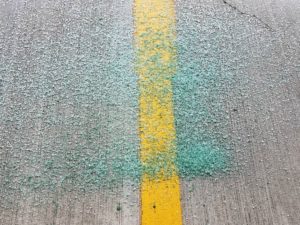
The Researchers state that this technology is ideal for the Mid-Atlantic region as the performance of the phase changing materials works best where the temperature frequently moves above and below freezing. There are many benefits to eliminating the use of deicing chemicals. Reduced operating costs and the reduced deterioration of concrete structures are the most beneficial to Building Owners. While to the environment, eliminating the use of traditional deicers will help keep the millions of tons of salt used in the region during a typical winter from entering the local waterways.
The new mix additives are expected to begin large scale testing in early 2018. While probably a few years away from widespread commercial implementation, it is nice to think that one day we may never need to clear our sidewalk of snow.
Attack of the Road Salts
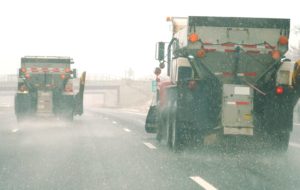
There are two basic classes of products commonly used to protect garage slabs, one of which is penetrating sealers. Penetrating sealers include materials such as silanes and siloxanes, which are silicone-based water repellants. These compounds penetrate into the concrete and react with the silica to create a water repellant barrier that also retards chloride migration.
Penetrating sealers are breathable so they do not create a vapor barrier and are relatively inexpensive. However, they do not seal cracks and require frequent reapplication as their effectiveness decreases with wear and time. These materials usually need to be renewed on a three to five year schedule.
The other class is traffic-bearing membranes, which are liquid-applied materials in several layers of cementitious, epoxy, or urethane compounds. These systems are all relatively thick (up to about 90 mils) and are designed with the properties needed to withstand the destructive forces imposed by vehicles tires.
SAFETY ISSUE: Fireplace & Chimney Maintenance

Artificial logs should only be used in accordance with manufacturers’ instructions and limitations. Most such products are intended to be burned only one at a time. Artificial logs vary in composition from hardwood fibers (sawdust or other sawmill waste) combined with wax or other binders, to petroleum wax (paraffin) mixed with various recycled materials. As a general rule, artificial logs should not be used unless the composition and burning characteristics of a specific product are fully described and deemed acceptable. Plastics, unidentified composites, or other materials of questionable makeup should be avoided.
Fireboxes require occasional cleaning/removal of ashes. Ashes should only be removed when absolutely no embers are present. Because embers can remain undetected long after a fire is out, ashes should only be placed into fireproof, metal containers.
Chimneys should be periodically inspected and cleaned, the frequency of which depends on fireplace use. Annual inspection is recommended for fireplaces that are used regularly. Cleaning may not be necessary at every inspection interval. It should be noted that chemical cleaners (cleaning logs, fire additives, etc.) should not be considered equal to professional cleaning.
Some products incorporate catalytic chemicals that react with the creosote and cause it to soften, flake and debond; however, the dislodged material can accumulate on shelves or other chimney offsets. They also tend to react only with the outer layer of creosote and are only partly effective in the presence of heavy buildups. They also may have no appreciable effect on soot, or residue from artificial logs.
Some products (which employ copper or other metal salts) rely on the rapid expansion of gas created when the salts are burned to dislodge deposited material. The effectiveness of those products is questionable, particularly with respect to heavy accumulations.
Creating A Desirable Break Room
Looking for that perfect employee gift this season? How about creating an enjoyable break room that will be used year-round.
Here is an example of space once confined by full height walls and only indoor lighting. Now, after adding frameless glass panels, it allows for natural daylight, as well as an open concept feel. A break room once used only for coffee cup refills, is now the center hub of the office.
Contact Shabbir Kazmi, AIA to discuss your break room needs.
OSHA Mandated Rope Anchor Load Testing Deadline
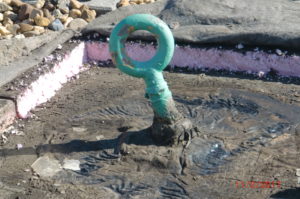
Did all your anchors pass the test?
The OSHA set November 20, 2017 deadline for physical load testing of these anchors has passed. (29 CFR 1910.27(b)(1)(iii)).
Did you make the deadline?
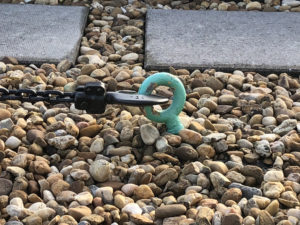
Don’t postpone your scheduled winter or spring window washing work, get your anchors tested soon. Call us @ 410-312-4761 or 703-450-622o | mindy@etc-web.com


